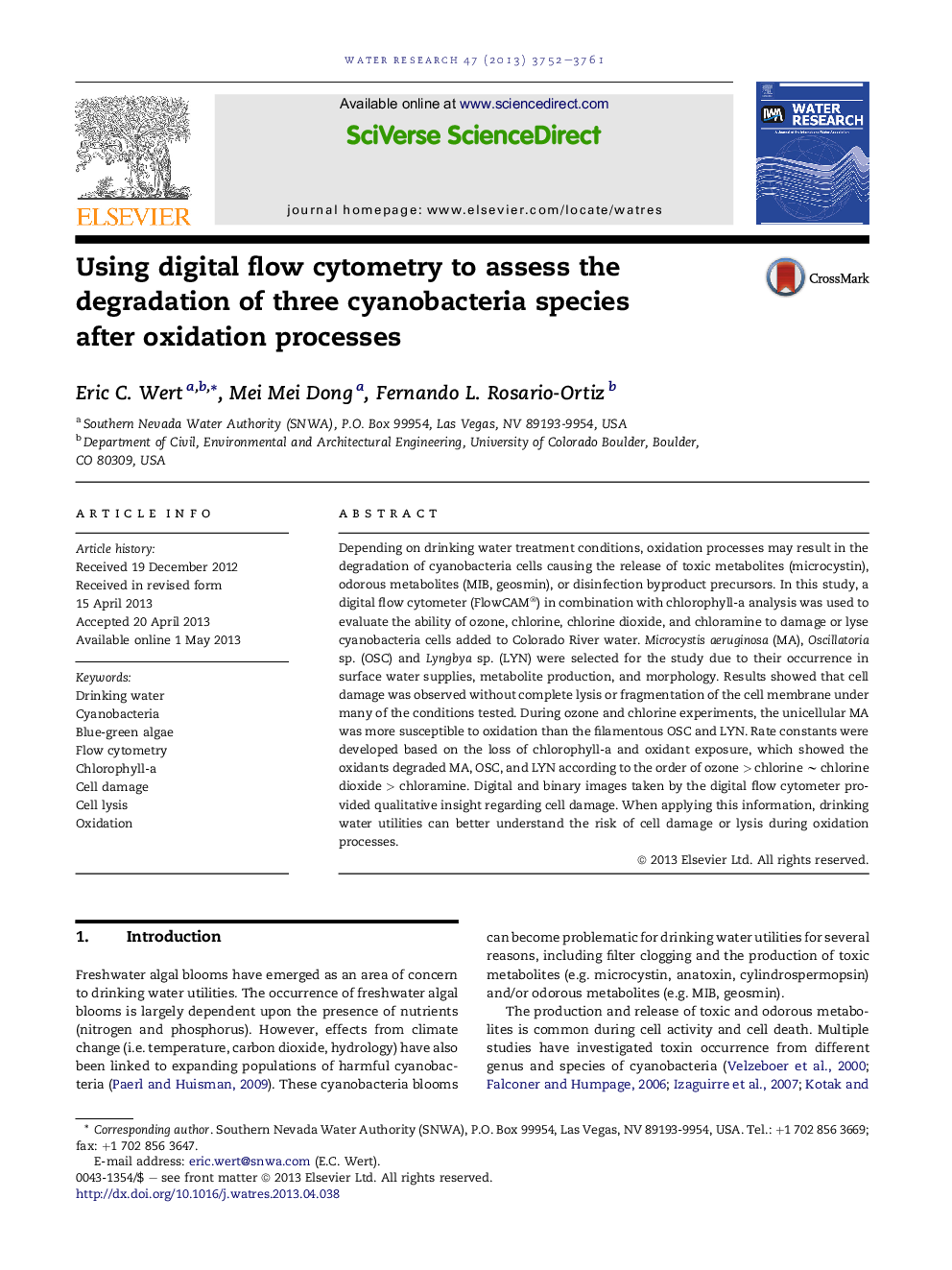| کد مقاله | کد نشریه | سال انتشار | مقاله انگلیسی | نسخه تمام متن |
|---|---|---|---|---|
| 4482187 | 1316850 | 2013 | 10 صفحه PDF | دانلود رایگان |

• Reaction rate constants were developed for three cyanobacteria and four oxidants.
• Oxidation decreased the chlorophyll-a and fluorescent particle concentrations.
• Oxidation did not change the total particle concentration.
• Images obtained from the flow cytometer provided insight regarding cell damage.
Depending on drinking water treatment conditions, oxidation processes may result in the degradation of cyanobacteria cells causing the release of toxic metabolites (microcystin), odorous metabolites (MIB, geosmin), or disinfection byproduct precursors. In this study, a digital flow cytometer (FlowCAM®) in combination with chlorophyll-a analysis was used to evaluate the ability of ozone, chlorine, chlorine dioxide, and chloramine to damage or lyse cyanobacteria cells added to Colorado River water. Microcystis aeruginosa (MA), Oscillatoria sp. (OSC) and Lyngbya sp. (LYN) were selected for the study due to their occurrence in surface water supplies, metabolite production, and morphology. Results showed that cell damage was observed without complete lysis or fragmentation of the cell membrane under many of the conditions tested. During ozone and chlorine experiments, the unicellular MA was more susceptible to oxidation than the filamentous OSC and LYN. Rate constants were developed based on the loss of chlorophyll-a and oxidant exposure, which showed the oxidants degraded MA, OSC, and LYN according to the order of ozone > chlorine ∼ chlorine dioxide > chloramine. Digital and binary images taken by the digital flow cytometer provided qualitative insight regarding cell damage. When applying this information, drinking water utilities can better understand the risk of cell damage or lysis during oxidation processes.
Figure optionsDownload high-quality image (167 K)Download as PowerPoint slide
Journal: Water Research - Volume 47, Issue 11, 1 July 2013, Pages 3752–3761